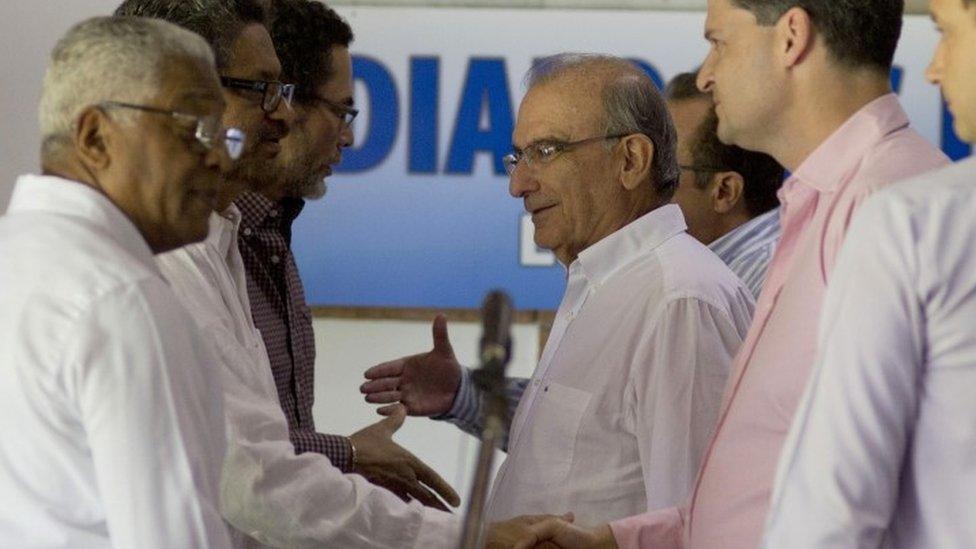Colombia: ELN rebels 'taking over Farc areas' ahead of peace deal
- Published
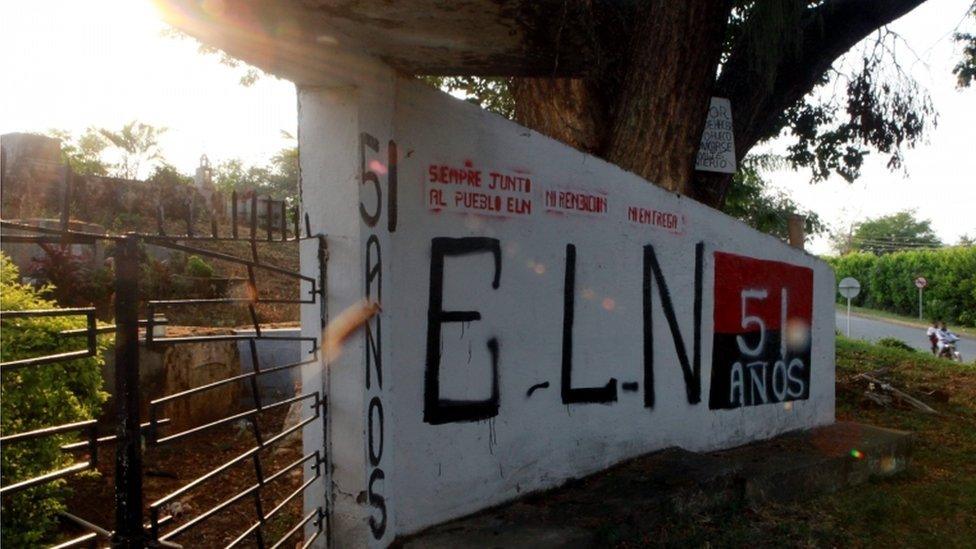
The ELN has marked its new territory in parts of Cauca province held until recently by the Farc
Colombia's indigenous agency (Onic) has expressed concern over the presence of fighters from the ELN, or National Liberation Army, in areas traditionally held by the Farc rebel group.
The government and the Farc are expected to sign a historic peace accord on 23 March.
The head of the agency, Luis Fernando Arias, urged the authorities to investigate.
He said the indigenous people fear the presence of the ELN on their land.
Indigenous groups in many parts of the country have found ELN propaganda material in their areas, said Mr Arias.
"Since the Farc declared its unilateral ceasefire [in December 2014] we have begun to see evidence of presence of the ELN in areas of Vale del Cauca, Norte del Cauca, Choco and Narino where they had never been," he said.
"So people began to ask themselves if there had been a change of command," added Mr Arias.
The Farc, or Revolutionary Armed Forces of Colombia, is by far the country's largest rebel group.
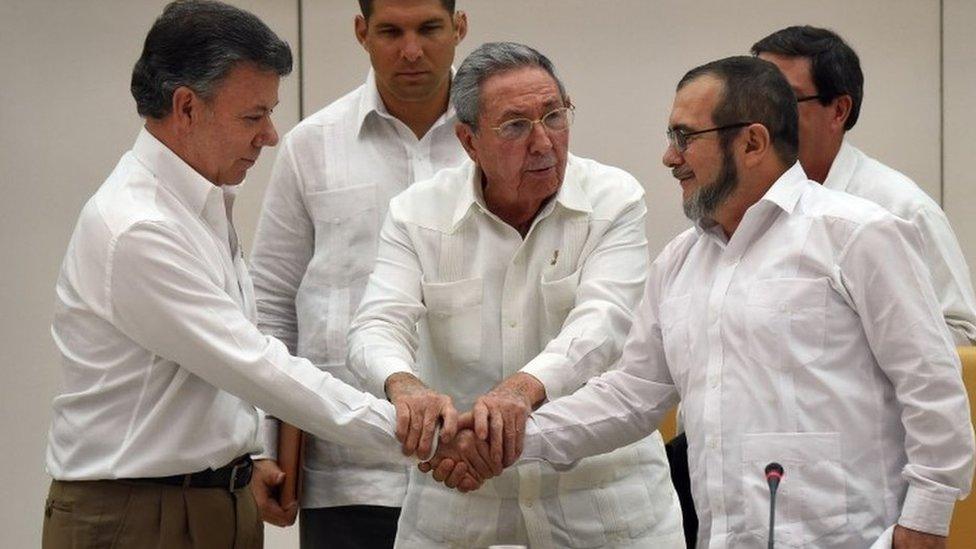
Colombia's President Santos (left) and Farc leader Timochenko shook hands after a meeting facilitated by Cuban President Raul Castro (centre) in September
It was founded in 1964 and is thought to have reached its peak in the 1990s and the 2000s.
It is now estimated to have 8,000 fighters in its ranks.
The ELN is Colombia's second largest rebel group.
El Tiempo newspaper has reported that the ELN seems to be recruiting Farc rebels who disagree with the peace deal or are insecure about their future in civilian life.

ELN
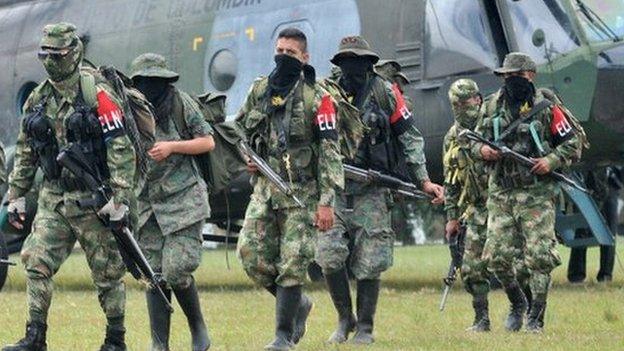
Some ELN members have demobilised, but an estimated 2,000 are still fighting
Founded in 1964 as a Marxist guerrilla group to fight Colombia's unequal distribution of land and riches
Estimated to have some 2,000 active fighters
Strongholds in the provinces of Arauca, Narino and Norte de Santander
Financed by extortion, drug trafficking and kidnappings for ransom

Farc negotiators and the Colombian government have been holding peace talks in the Cuban capital, Havana, since November 2012.
The two sides have announced they are willing to sign an agreement on 23 March, putting an end to more than five decades of conflict.
The agreement would then need to be approved by the Colombian people in a referendum.
More than 220,000 people have been killed and millions have been displaced in unrest which began in the 1960s and has also involved other guerrilla groups and right-wing paramilitaries.
Preliminary talks between the government and the ELN started two years ago during negotiations with the Farc.
But President Juan Manuel Santos is demanding that they release two captives as a condition for any peace deal.
- Published9 February 2016
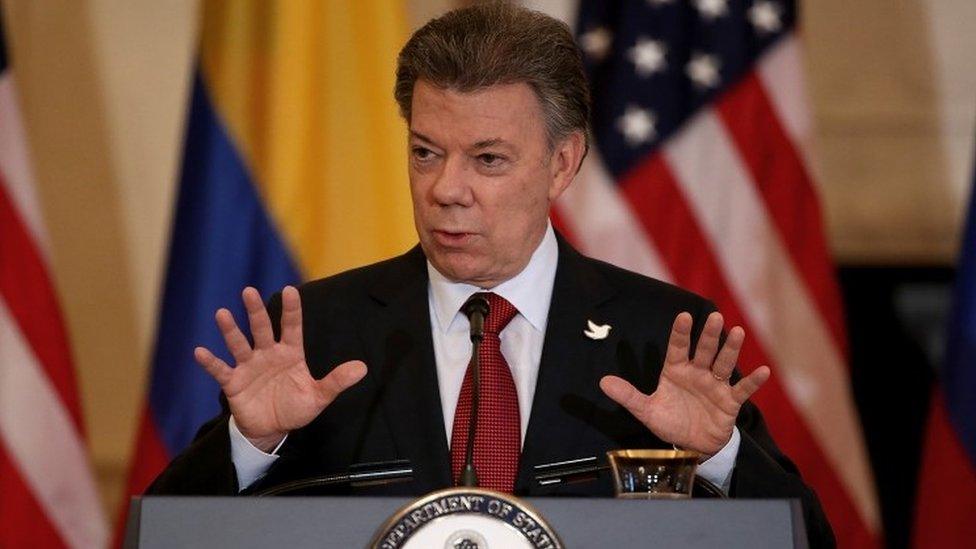
- Published20 February 2016
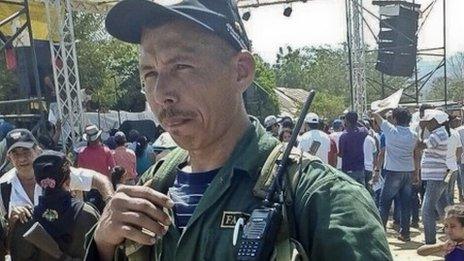
- Published21 January 2016

- Published14 December 2015
